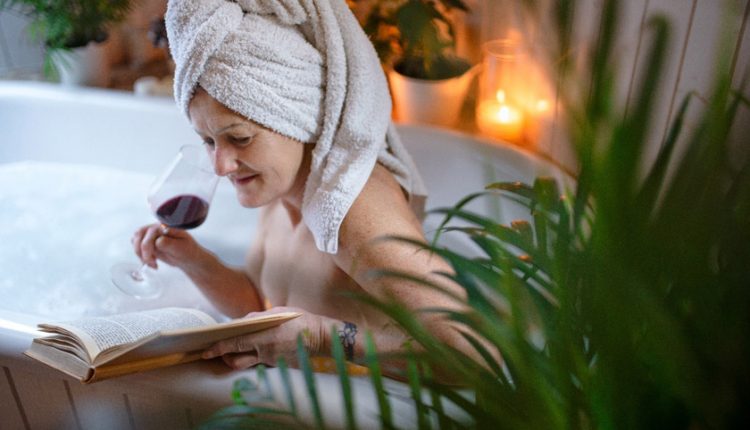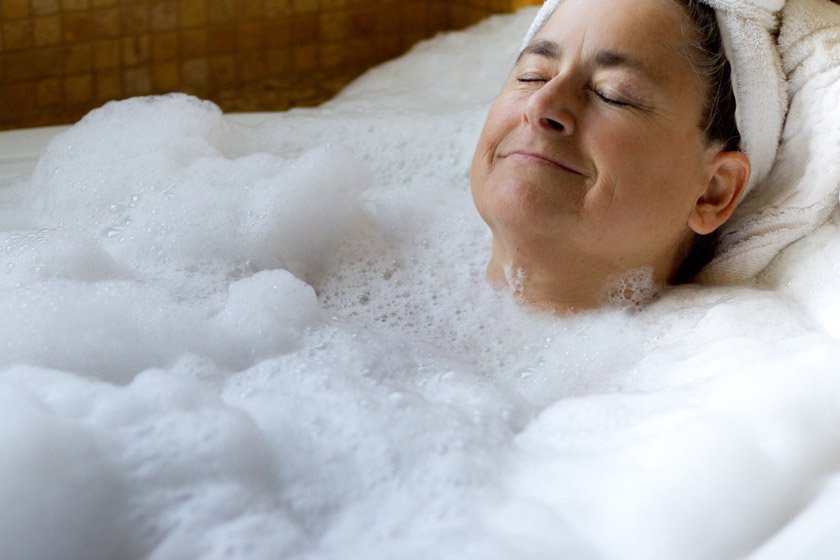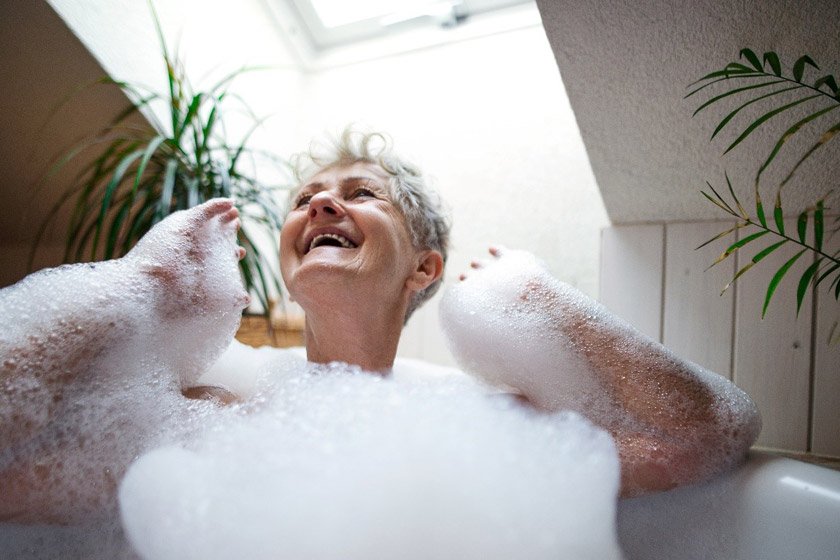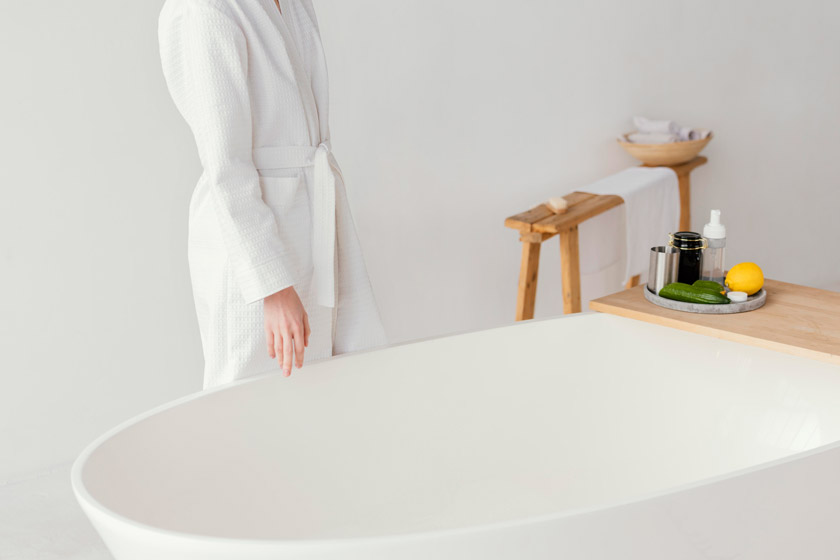
The 5 Magical Benefits of Bath Therapy for Seniors
From centuries ago, human beings have recognized the therapeutic effects of water. Greeks and Romans spent time in steam and hot bathes due to their healing power. Today, people, particularly seniors, are still avid for these medical benefits. So, this article tries to give a brief description of bath therapy and its benefits for seniors.
What Is Bath Therapy?
Bath therapy is a type of hydrotherapy that involves soaking the body in the water. It is a kind of physical therapy that is highly recommended for seniors to treat different diseases and distress. Bath therapy and hydrotherapy are different from swimming since Bath therapy is in warmer water and contains specific exercises. There are different types of hydrotherapy like water circuit therapy, aquatic massage, steam baths, balneotherapy, contrast hydrotherapy, etc.
Bath therapy mainly uses warm water for therapeutic purposes. There is scientific evidence that warm water in bath therapy can relieve pains, stimulate the immune system, and increase joint flexibility. The fact is that warm water (warmer than 34 ⸰C) effectively improves blood circulation. It is additionally, submerging the body in warm water act as a massage due to the hydrostatic effect of water. It helps the nervous system convey heat and pressure through the body, promote blood circulation, and omit stress hormones.
Contents
Different Types of Bath Therapy
Bath therapy is considered as one of the below classifications, which has its specific subclasses:
- Hot water tub bath (water temperature between 45-46 ⸰C)
- Warm water tub bath (water temperature should be 43 ⸰C)
- Cool water bath (water temperature should be 37 ⸰C)
- Coldwater bath (water temperature should be around 15 ⸰C)
However, the primary healing effect of bath therapy is warm water. For this reason, most therapeutic bathes use warm water.
Benefits of Warm Bath Therapy

Decrease Inflammation
Studies show that increasing body temperature helps the body to raise anti-inflammatory responses. Results of a study revealed that submerging in warm water could decrease chronic low-grade inflammation.
Regulate Blood Sugar
Stress can cause an increase in blood sugar levels as the body releases stress hormones like cortisol and adrenaline. Bath therapy can also help reduce stress levels and promote relaxation, which can lower blood sugar levels. It improves blood circulation, which can help insulin reach cells more efficiently, leading to better regulation of blood sugar levels.
Better Blood Circulation and Lower Blood Pressure
Immersing in a warm water tub help vessels be more relaxed and flexible. The more flexible vessels, the lower blood pressure and thereby better blood circulation.
Relieve Pain and Ache of Muscles and Joints
By increasing blood circulation, the muscles and joints aches relieve due to warm bath therapy.
Hydrate Skin and Improve Skin Health
The water and spa effect on skin has been revealed for a long time. Different essential oils and salts have been used for skin health purposes with warm water. Based on National Eczema Association, besides the relaxing effect of warm bath therapy, laying down 10– 15 minutes in a warm ware tub helps the skin absorb moisture. Moisture is one of the essential factors for looking younger at older ages.
Different Warm Bath Treatments (Specifically Helpful for Skin Health)

National Eczema Association recommended using some specific bath treatments like:
Bath Oil
Bath oils also keep moisture within the skin. However, it’s better to use oils without any fragrance (for people with special skin conditions). Essential oils like lavender or rose are great for stress relieving and relaxing.
Baking Soda
Incorporating a quarter-cup of soda into a warm water tub helps eliminate itching.
Bleach
A half quarter-cup of regular bleach for a full tub of warm water and laying down for 10 minutes helps you to reduce inflammation and decrease the bacterial load on your skin (for skins with eczemas).
Colloidal Oatmeal
Adding colloidal oatmeal to warm water can decrease itching, soothe and protect skins. It can directly apply to on skin as a paste as well.
Salt
Different salts use for bath therapy. For example, Epsom salt softens rough and dry skins. It can also use as a physical exfoliate to remove dead skin cells. It positively affects skins with eczema and psoriasis.
Vinegar
It has been thought that adding a cup of vinegar to the bath can reduce the bacterial load on the skin.
What Is Contrast Bath Therapy?
Contrast bath therapy is a subclass of bath therapy that consists of immersing (all or part of a body) in hot water followed by ice water alternatively and repeatedly. Like other types of bath therapy, contrast bath therapy affects blood circulation. It is believed that hot water at the first step causes vasodilation, consequently increasing blood flow in the body. Subsequent submerging the body in the ice water leads to vasoconstriction of vessels and decreases the bloodstream and lymph system in the body (or part of the body).
This alternative vasodilation and vasoconstriction of vessels improve the stagnant fluid movement around an injured organ. Pumping stagnant fluid also helps the organ accelerate the healing process by decreasing swelling and inflammation, relieving pain and ache in an injured organ.
Contrast Bath Therapy Benefits
Contrast bath therapy has several benefits, including:
- Lowering pain
- Decrease edema, swelling, and inflammation
- Promote mobility
- Treat injuries
Different kinds of injuries and diseases can be treated using contrast bath therapy, including:
- Bone fracture (especially leg, ankle, and upper extremity)
- Planter facility
- Hand and finger arthritis
It is also quite beneficial for muscles recovery from exercise since it can significantly decrease blood lactate levels. However, it is noteworthy that this kind of bath therapy is not recommended to treat acute inflammation (inflammation that lasts more than 72 hours after an injury happens).

Final Words
Bath therapy is a therapeutic and beneficial action for seniors to relieve pain and also decrease swelling and inflammation. However, the only risk of contrast bath therapy is that you could hurt your skin if the water temperature is too hot or cold. Therefore, you need to consult your doctor and be careful.
In short, warm bath therapy helps treat low-grade inflammation, edema, stiff joints, inflammation of soft tissues, muscle spasms, and painful limbs in seniors.
I think it’s the first time I have heard of bath therapy, so this article was very informative and interesting. Although, I do have one question. Is there a situation in which bath therapy can be considered bad for seniors? I mean, except for acute inflammation, which is mentioned in the article, when else should seniors avoid bath therapy?
I think bath therapy can’t be harmful to health in general. However, people with special conditions should consult a healthcare provider first or use a bath in quite controlled conditions. I mean, what happens if a person with breath issues loses control of hot water temperature? everyone knows that there is not enough oxygen in hot water bathes
There’s nothing that a nice, long, warm bubble bath can’t fix.
Is it unsafe to take a bath after eating? Sometimes I feel light-headed while in the shower or taking a bath, but I don’t want to risk eating prior. Is it dangerous, or is it just a myth?
Some experts say that bathing right after eating a meal is bad because it can delay the digestion process and occasionally give you a stomachache. So it is better to wait for 2 or 3 hours after a meal to take a bath, or even better, take a bath before having your meal.
I never thought taking a warm bath could be this beneficial. No wonder it makes me feel so relaxed. I always listen to music while taking a bath, mostly jazz, sometimes I even listen to podcasts when I’m in the mood! There are also relaxing bath playlists in Spotify.
I agree with your point of view, your article has given me a lot of help and benefited me a lot. Thanks. Hope you continue to write such excellent articles.